Mercat Traditions: Why We Dress Up for Halloween
30th Oct 2025Every year, the Mercat Storytellers and team dresses up for Halloween. You’ll see everything from historical figures to creatures of folklore waltzing down the Royal Mile.
This holiday is also known as Samhuinn, meaning Summer’s End.
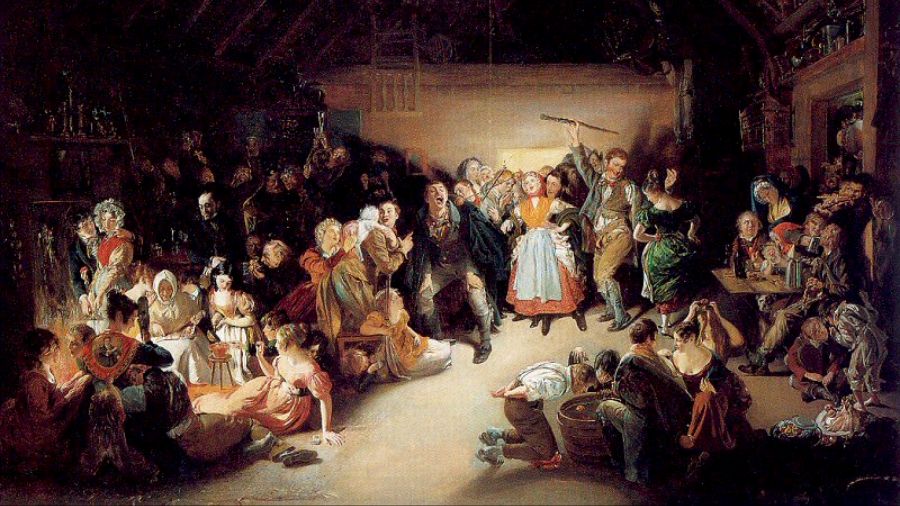
Snap-Apple Night (1833) by Daniel Maclise
In Celtic tradition, the year is split into two halves: the light half and the dark half. Samhuinn, what we know today as Halloween, marks the beginning of the dark half of the year.
It is the season of the dead.
Halloween tours in Edinburgh
Edinburgh is the perfect place to explore on the most haunted night of the year.
It’s no surprise that in a place where ancient, Pagan traditions split the year into light and dark halves, that ghost stories seem to wait around every corner.
While we offer ghost tours year-round, our programme changes at the end of October. So, what’s different with these Halloween tours?
At their core, they’re about Scottish traditions.
Our Storytellers have the unique ability to bring Samhuinn celebrations to life. With their help, we can gather to remember the dead, learn Scottish traditions and maybe even divine the future (get your candles and apple peels ready!).
You might be aware of certain Halloween traditions, but we can teach you where they came from. Each Mercat Storyteller also dresses up for Halloween—not just the day itself, but the whole week leading up to it.
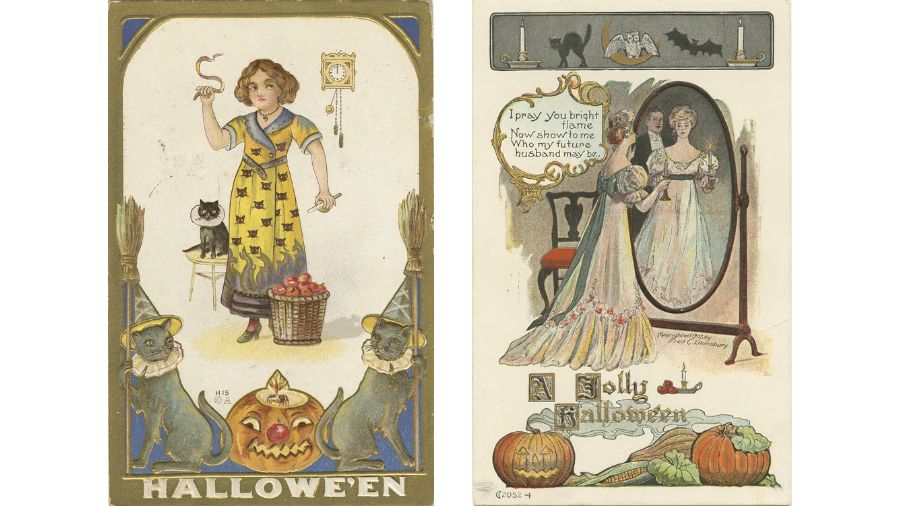
Early 20th-century post cards
Where does the tradition of dressing up for Halloween come from?
It was believed that the dead live in another realm. The veil between this world and that one is thinnest on Halloween night, allowing spirits to pass through.
Meaning, spirits can visit us and carry out any unfinished business. As you might imagine, this can lead to both welcome and unwelcome visitors.
Today, you’re probably familiar with Trick-or-Treating: dressing up and going door to door for sweets or other treats. This stems from an old Scottish tradition linked to the veil between worlds.
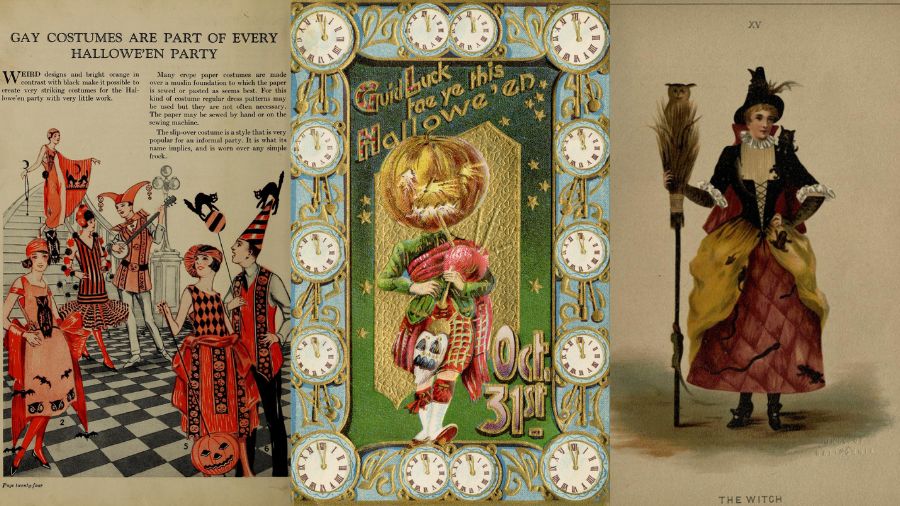
1920s Halloween costume guide, early 20th century post card, 1887 fancy dress book
One way to dissuade malevolent spirits from harming you while they roam this world is to leave offerings at your door. If you must leave the house, disguising yourself as a spirit helps you blend in, and therefore be left alone.
You can probably see where Trick-or-Treating came from, then.
In Scotland, the common term for this is guising, and people have been doing it for centuries.
What have Storytellers dressed up as?
Inside a folder simply titled ‘Halloween’, we have decades of Halloween costumes documented, from real people to mythical figures, witches to the embodiment of seasons. Let's take a look at some of them.
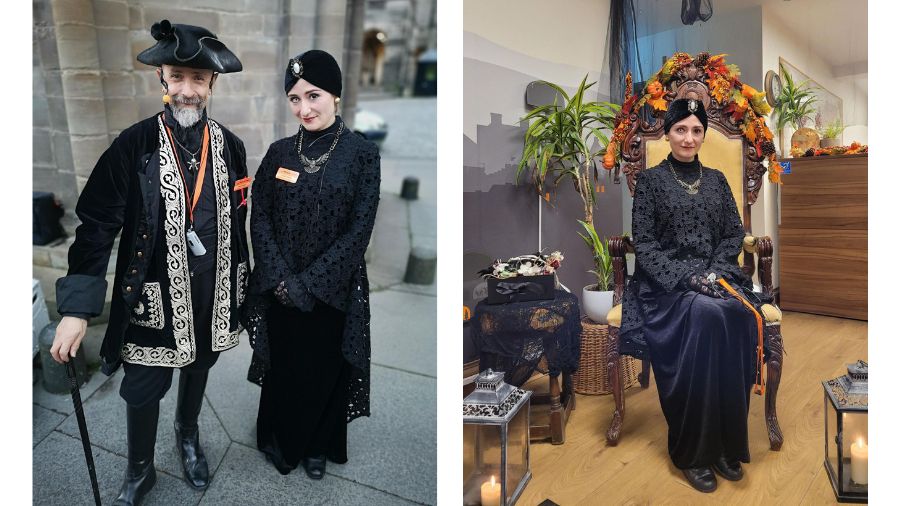
Thomas Weir
Here, Michael is dressed as Major Thomas Weir. Also known as the Wizard of West Bow, Weir is often wrapped up in the stories of the Scottish Witch Trials.
Though he wasn’t officially accused of witchcraft, his is certainly a dark story, and one we can only discuss on our adult-only tours...
A Medium
Stefanie, on the other hand, is dressed as a medium.
She might have been inspired by Helen Duncan, a medium who in 1944 was convicted under the Witchcraft Act of 1735. It was done, according to the War Office, in order to protect military secrets.
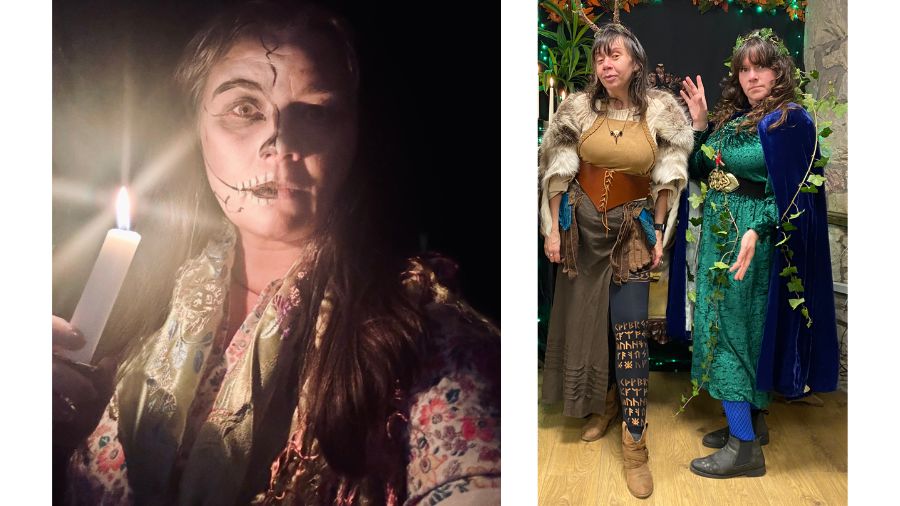
Maggie Dickson
Kirsty chose to dress as a beloved former Edinburgh resident: Maggie Dickson, also known as Half Hangit Maggie.
In 1724, Maggie was executed in Grassmarket for concealing a pregnancy. Or, they attempted to execute her. Read on after the next image to find out what happened after the gallows.
Pagan Imagery
Tania and Nicola dressed in ways reminiscent of folklore characters and Pagan iconography. So much of Halloween—or Samhuinn—is rooted in Pagan culture, it’s impossible to separate the two topics.
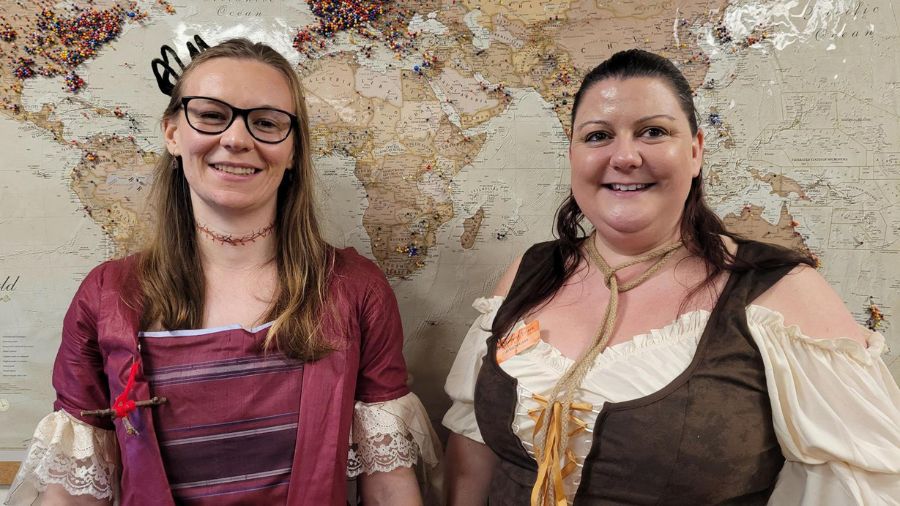
White Lady of Corstorphine
Naomi dressed as Lady Christian Nimmo, also known as the White Lady of Corstorphine. She is said to haunt a sycamore tree in the white-dress-turned-red she wore to her execution.
Nimmo was executed via the Maiden (a Scottish guillotine) in 1679, right at the Mercat Cross. She was convicted of killing her uncle.
Half Hangit Maggie
Debs also chose to dress as Maggie Dickson, who as we mentioned above was to be executed in 1724.
And they did indeed hang her, but the death sentence didn’t quite take. While being transported to her own burial afterwards, she woke up, scaring the daylights out of her friends and family.
The hanging was unsuccessful, and it was seen as divine intervention. Maggie lived another 40, seemingly happy, years.
Descend into the depths of the city and hear its darkest tales this Halloween. Join us for a Halloween tour or history walk of Edinburgh.

